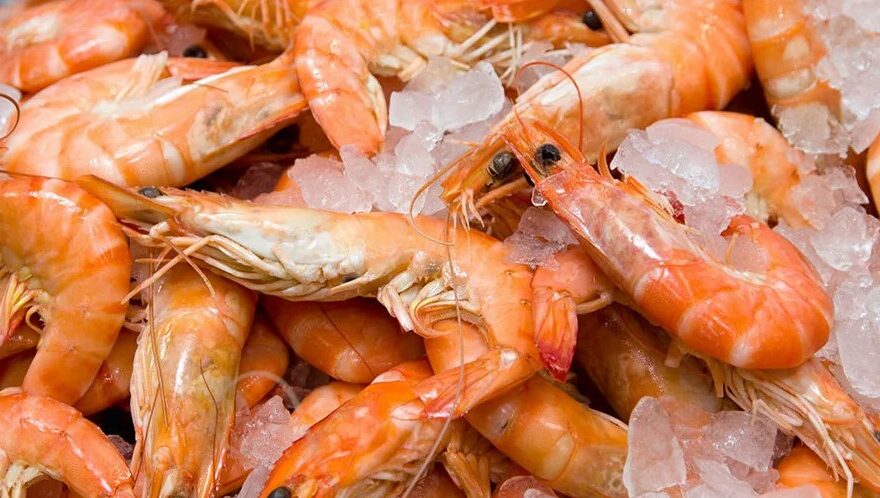
Singapore, known for its dynamic culinary culture, has a well established love illicit relationship with seafood. In the midst of the rich cluster of oceanic delicacies, fresh prawns stand out as a valued fixing in local cuisine. Be that as it may, as global worries about sustainable fishing practices and environmental conservation develop, the journey for capably obtained fresh tiger prawns has become an imperative in Singapore’s seafood industry.
Understanding the Demand for Fresh Prawns in Singapore:
Fresh prawns Singapore, especially the esteemed tiger prawns, stand firm on an esteemed foothold in local gastronomy. Whether stir-fried in sweet-smelling sauces, grilled flawlessly, or exhibited in debauched seafood soups, these shellfish are a necessary piece of the island country’s different culinary legacy.
The demand for fresh prawns Singapore is hearty, driven by local inclinations as well as by the country’s status as a global hub for gastronomy. Nonetheless, with the rising consciousness of maintainability issues encompassing seafood creation, customers are looking for environmentally friendly options that guarantee the conservation of marine ecosystems without settling for less on taste or quality.
Nonetheless, alongside this intense craving for fresh prawns, a developing consciousness of maintainability worries inside the seafood industry has arisen. Buyers are becoming progressively conscious of the environmental effect of their food decisions, prompting a change in inclinations towards seafood that is capably obtained.
Thusly, there is a rising demand for environmentally friendly options that guarantee the conservation of marine ecosystems while keeping up with the outstanding taste and quality that fresh prawns offer.
Challenges in Sourcing Sustainable Fresh Tiger Prawns:
The excursion towards guaranteeing sustainable seafood practices faces multifaceted challenges, especially concerning the sourcing of fresh tiger prawns. The aquaculture industry experiences an intricate difficult exercise between satisfying the heightening need for these prawns and defending the sensitive marine conditions from which they are gathered.
Issues, for example, overfishing represent a critical danger to the manageability of prawn populaces. Widespread double-dealing of natural resources can upset the ecological balance, jeopardizing the long-term suitability of prawn cultivating. In addition, the annihilation of environments because of unsustainable cultivating practices further compounds this worry.
The utilization of harmful chemicals and antibiotics in aquaculture, pointed toward amplifying prawn yields, has brought alerts up in terms of its effect on both amphibian ecosystems and buyer wellbeing. Also, the industry’s commitment to water pollution and carbon emissions highlights the dire requirement for eco-conscious methodologies in sourcing fresh prawns.
The bottom trawling method includes hauling enormous nets along the seafloor to catch prawns. While successful in capturing a huge amount of prawns, it is highly destructive. Bottom trawling can crush marine habitats by destroying coral reefs, damaging seabed structures, and disrupting the homes of different marine species.
This unpredictable method results in bycatch, catching accidental species like juvenile fish, endangered species, and other marine organisms, further threatening biodiversity.
Utilizing more particular methods can essentially moderate environmental damage. Specific methods like pot or trap fishing, which include putting baited traps or pots on the seafloor, or utilizing hook-and-line fishing techniques, are more targeted and result in altogether less bycatch. These methods assist with safeguarding the honesty of marine habitats, reduce incidental catch of non-target species, and keep up with the general health of the ecosystem.
Tending to these challenges requires imaginative arrangements and an aggregate responsibility from partners to change aquaculture practices. Finding an amicable balance between satisfying the need for fresh tiger prawns and saving the delicate marine ecosystems stays a squeezing challenge that requires prompt consideration and deliberate endeavors from every single included party.
Exploring Environmentally Friendly Options:
In light of these challenges, Singapore’s seafood industry has been effectively exploring and executing imaginative answers for advance sustainable practices in prawn cultivating.
Aquaculture Innovation:
Chasing after sustainable prawn cultivating, aquaculturists are at the front line of embracing state of the art innovations. Among these advancements are recirculating aquaculture systems (RAS) and coordinated multi-trophic aquaculture (IMTA). RAS includes closed-loop systems that proficiently reuse and treat water, radically decreasing in general water usage while limiting the discharge of pollutants.
IMTA, then again, coordinates various species inside aquaculture systems, making cooperative connections where squander from one animal types becomes supplements for other people. This shortens pollution as well as improves biodiversity by cultivating natural ecosystems inside ranches.
Certifications and Standards:
The meaning of certifications like the Aquaculture Stewardship Council (ASC) and Marine Stewardship Council (MSC) couldn’t possibly be more significant in guaranteeing sustainable seafood sourcing. These certifications lay out tough rules that envelop environmental, social, and ethical considerations in prawn cultivating or reaping practices.
ASC certification explicitly assesses the environmental effect of aquaculture tasks, guaranteeing mindful water usage, territory conservation, and negligible utilization of chemicals or antibiotics. Also, MSC certification confirms that prawns are discovered utilizing techniques that keep up with solid fish populaces and safeguard marine ecosystems, in this way directing purchasers toward pursuing informed decisions that support maintainability.
Local Initiatives:
Singapore’s devotion to sustainable seafood is additionally exemplified through cooperative initiatives including government bodies, seafood providers, and shoppers. These initiatives go past just contribution sustainable prawns; they center on encouraging a comprehensive way to deal with maintainability. Instructive missions bring issues to light about the significance of mindful utilization and the effect of fishing practices on marine ecosystems.
These endeavors engage customers to settle on informed choices while empowering local providers to focus on sustainable sourcing. Government support plays a critical job in boosting and advancing eco-friendly practices inside the seafood industry, subsequently supporting a market that values and searches out locally obtained, sustainable prawns.
Also Check: Where to Find the Freshest Salted Eggs Near You?




